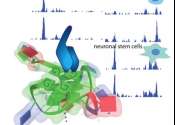Mutant stem cells defy rules of development
Imagine you're baking a cake, but you run out of salt. Even with the missing ingredient, the batter still looks like cake batter, so you stick it in the oven and cross your fingers, expecting to end up with something pretty ...









